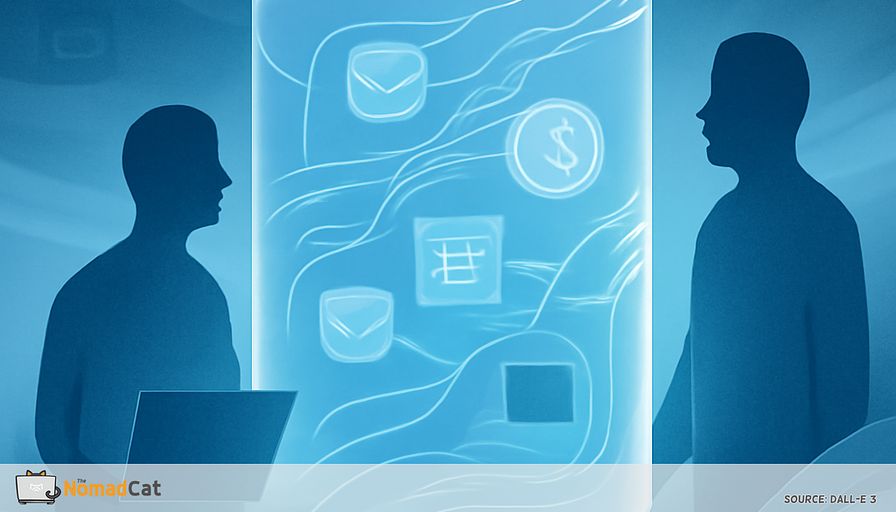Abstract:
The article emphasizes that freelancing in tech often becomes stressful when boundaries and expectations are unclear, leading to late-night requests, shifting priorities, and burnout. To address this, the article advocates for creating a flexible, co-authored "expectation blueprint" with clients at the outset of a project. This living document outlines practical aspects like communication channels, response times, meeting rhythms, and blackout periods, and is designed to be regularly reviewed and updated as needs evolve. Through personal anecdotes—such as managing a multicultural team in Beijing where monthly blueprint reviews prevented misunderstandings and a real-world example where blackout periods reduced after-hours work—the article illustrates how clear, collaboratively set agreements foster trust, psychological safety, and productive partnerships. Ultimately, it argues that such blueprints transform boundaries from rigid fences into shared tools that support creativity, prevent burnout, and keep freelance tech projects running smoothly, suggesting that even small, agreed-upon rules can significantly improve working relationships.
Expectation blueprint for tech freelancersFreelancing in tech can feel like a balancing act. Since moving to Lisbon last year, I learned the hard way that a single Slack ping can wreck a sunset surf session. Maybe you have had a project where the boundaries blurred. One “quick” message turns into late night requests, or a client reshuffles priorities just as you are finding your stride. It is stressful and can wear you down. Most of the time no one is trying to be difficult; expectations were simply never set.
The pressure eases when ground rules come first. Agree on simple ways of working from the first hello and you trade drama for calm. Clear agreements spare both sides from guesswork, keep energy for the real work, and make the partnership feel like a partnership.
Building better foundations
From firefighting to friendly ground rules
Many tech freelancers know the story. You are in flow, then a late night ping arrives, or another small scope change appears in your inbox. Stress is rising because the boundaries, they showed up only once trouble started. Talking about how you work before problems appear keeps trust high and makes life simpler. Upfront clarity, backed by plenty of research, turns rough moments into smooth ones.
Turning boundaries into working agreements
Drafting boundaries together removes the awkwardness. Both sides look at a shared document so no one has to start a tense chat later. Suggest, “Let’s jot down how we will work so we both know what to expect.” This informal contract, rooted in mutual respect, supports psychological safety. Everyone feels heard, and the focus stays on the project—not on last minute texts.
Boundaries as partnership, not a fence
When boundaries are co-created, the mood changes. The goal is not to shut doors but to find what helps both parties do great work. In a 2022 survey of 230 remote developers, teams that co-wrote communication charters reported 37% fewer after-hours messages. Boundaries become shared tools, not shields.
What makes an expectation blueprint different
Living, flexible agreement—not just another contract
An expectation blueprint, created together at the start, covers everyday collaboration. No legal fine print. You revisit and tweak it without calling a lawyer.
What goes into your day to day map
A solid blueprint covers practical points:
- Preferred communication channels (Slack, email, phone)
- Typical response times so no one waits by the phone
- Meeting rhythm and how often you touch base
- Steps for urgent issues
- Recharge rules such as no calls on Sundays or after 18:00
For freelancers juggling several clients or time zones, these rhythms in writing are a lifesaver.
Keeping everyone on track as things shift
Tech projects move fast, sometimes across continents. A shared blueprint clears up confusion from day one. If you are in Lisbon and your client is in Singapore, both sides know who is online when. After introducing a blueprint on a Berlin fintech rebuild, I cut unexpected scope emails from 12 per week to just 3. One document becomes the single point of truth.
The blueprint essentials
Must-have sections for clarity
First pin down working hours and how you like to be reached:
- Email: “I check mail twice a day and reply within 24 hours on weekdays.”
- Chat: “Available for quick messages between 10:00 and 16:00.”
- Video calls: “Please book at least 48 hours in advance.”
- Phone: “For emergencies, send a note first.”
Clear hours also stop unpaid overtime from silently eating your effective rate—a lesson my Berlin startup days taught me.
Setting response times that work
Agreeing on response times removes guesswork. If the client knows when a reply comes, evening pings disappear and you get your nights back.
Check-ins, updates, and escalation steps
Schedule quick weekly check-ins or a Friday status email. Add a rule such as, “If a blocker lasts more than a day, I will flag it in our shared doc and tag you.” Problems stay small and visible.
Going further with extras
Blackout periods and digital detox
Nothing beats waking up to birds instead of Slack pings on a Sunday.
Blackout periods like “no meetings after 18:00” or “weekends are off” show respect for focus and rest. Research links these breaks to better creativity and lower burnout.
Keeping things current with review cycles
Set review points, for example monthly or after big milestones. The blueprint stays useful instead of gathering dust.
Honoring recharge rhythms
Mention vacations or preferred work sprints early. “I am offline for two weeks in August. Let’s plan around that.” Clients appreciate the honesty.
Co-creating blueprints with clients
Starting the conversation
First meetings can feel stiff. Introduce the blueprint as part of your normal process: “Here is how I work and what I need from you. Can we review it together?” Invite edits so the plan becomes shared.
Making it a living document
Use a shared doc for tweaks. Ask questions such as, “Do you prefer weekly updates on Friday or Monday?” Schedule regular reviews so the blueprint adapts as the project evolves.
Staying balanced and keeping burnout away
Regular update rituals
A short weekly call or a Friday email keeps both sides aligned. Predictable check-ins catch small issues before they grow. It also limits that creeping solitude many solo developers feel after days without real-time feedback.
Simple updates that keep things on track
A brief status note can cover:
- Work completed
- Work in progress
- Blockers
- Next steps
Don’t wait to raise red flags
If scope shifts overnight, flag it right away: “This popped up, can we adjust our plan?” Quick signals keep trust strong.
When boundaries are challenged
A midnight call? Just point back to our shared hours and head back to bed.
Quick script: “I’d love to help, but per our agreed hours I’m offline now. Let’s tackle this at 10:00 tomorrow.”
Keeping things flexible, not rigid
When business needs change, update the blueprint together. Boundaries stay visible and adaptable.
Keeping energy and well-being in check
Adaptable boundaries protect against burnout. When I managed a multicultural tech team in Beijing, monthly blueprint reviews helped us stay aligned despite multiple time zones and languages. Minor misunderstandings never grew into big headaches.
Templates and tech project examples
Simple expectation blueprint
A straightforward template covers:
- Working hours
- Communication channels
- Response times
- Regular updates
- Blackout periods
- Escalation steps
- Feedback space
Sample outline:
- Working hours: “Monday to Friday, 09:00–18:00 Lisbon time.”
- Channels: “Email for key updates, Slack for quick chats.”
- Response times: “Emails answered within one business day, Slack during working hours.”
- Updates: “Check in each Friday afternoon.”
- Blackout: “No urgent pings after 18:00 or on weekends.”
- Escalation: “Mark email as urgent for time sensitive issues.”
- Feedback: “Either side can suggest changes here.”
Making blueprints personal and practical
Adjust tone or meeting rhythm for each client. A data-heavy sprint may need biweekly calls, while another project might prefer written summaries.
Collaborative tools
Use Google Docs, Notion, or Confluence so both sides can comment in real time. The most current agreement is always available and easy to refresh.
Real results from tech projects
On one project, setting response times and blackout periods cut after-hours requests and let both sides relax in the evenings. We logged 21 late-night pings in week one; after the blueprint, that dropped to five.
During a scope change on another build, the team updated the shared doc with new deadlines instead of holding extra calls. Momentum stayed high and tensions stayed low.
For a global e-commerce build across Paris, Beijing, and Berlin, a shared blueprint clarified update times and urgent channels. The written plan bridged cultures and time zones, turning potential confusion into smooth teamwork.
Boundaries strengthen trust and creativity
Boundaries signal trust and respect
Clear boundaries show professionalism and care for the people involved. Clients feel secure when they know the ground rules.
Co-created boundaries boost engagement
When clients help shape the rules, the blueprint feels like “ours,” not “yours.” Engagement rises and hiccups fall.
Boundaries as scaffolding for meaningful work
For those who value simplicity, boundaries act like scaffolding. They hold the space where deep work happens and make independence possible.
Flexibility beats rigidity
Clients prefer clarity
Most clients welcome honest expectations. Boundaries make outcomes predictable and lower day-to-day stress.
Living blueprints invite feedback
A good blueprint leaves room for exceptions, special launches, or time zone quirks. Openness keeps the work fair and honest.
Boundaries set everyone up to win
A thoughtful blueprint removes uncertainty, frees energy for great work, and keeps the relationship healthy.
Key takeaways:
- Protect energy
- Update often
- Share ownership
- Prevent burnout
- Build trust














